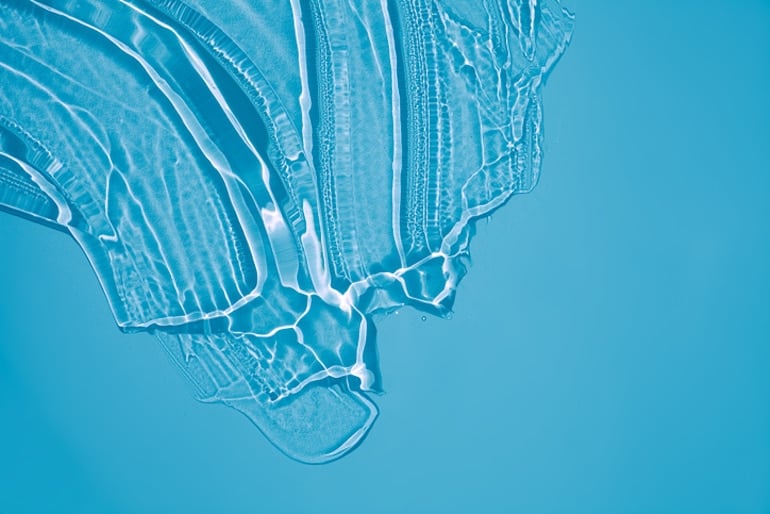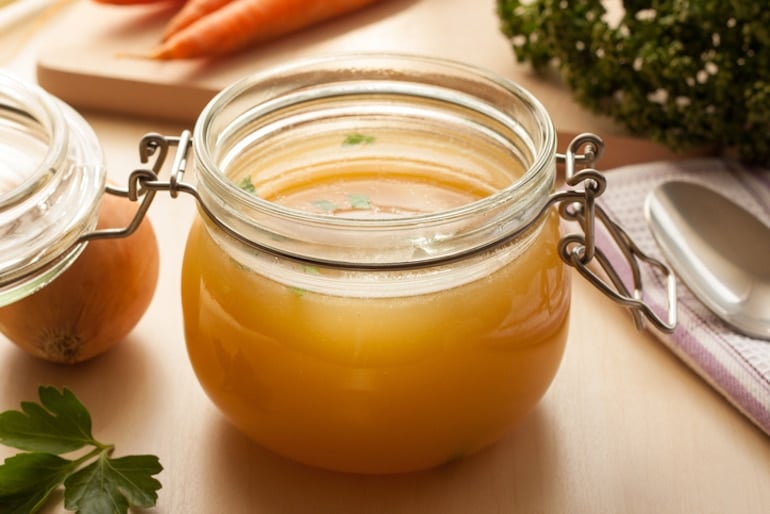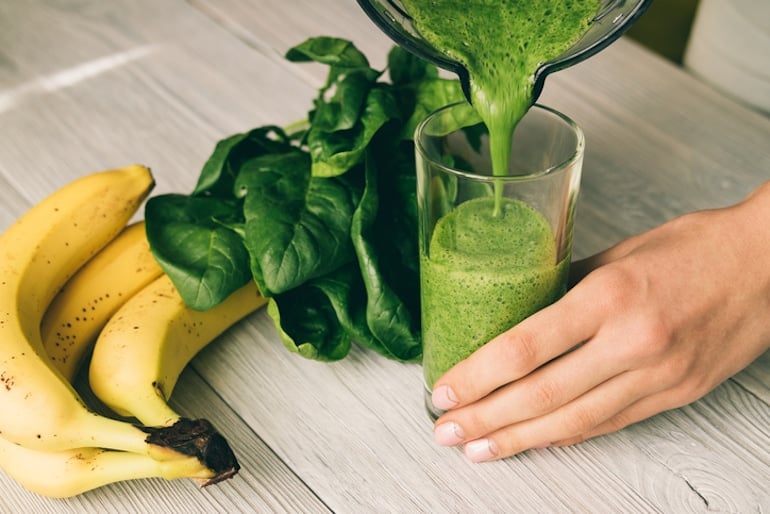Foods High In Hyaluronic Acid And Vitamin C
The Top Hyaluronic Acid Foods for Hydrated Skin
SHARE
Jessica Bippen, MS, RD, shares what foods contain hyaluronic acid naturally. Plus: additional plant-based foods that can boost your body's production of the famously hydrating molecule.
Hyaluronic acid gets a lot of attention in the beauty industry. And for good reason! When applied topically, it can benefit your skin's appearance by locking in moisture and keeping your skin hydrated.
In addition, research shows that hyaluronic acid foods and supplements can support your skin by reducing the formation of wrinkles. These HA-rich foods can also increase collagen production, as well as keep tissues and joints well lubricated and aid in wound healing.
By incorporating hyaluronic acid into your diet, you can support fresh, hydrated skin and a healthy body. Keep reading to discover the top hyaluronic acid foods.

First, WHAT IS HYALURONIC ACID?
Hyaluronic acid, also known as hyaluronan, is a large chain of sugar molecules found throughout the entire body. However, you can find the most concentrated sources of hyaluronic acid in the skin, connective tissues, and the synovial fluid that lubricates your joints.
This molecule attracts over 1,000 times its weight in water, making it the gold standard for hydration and retaining moisture.
As you age, your body breaks down naturally occurring hyaluronic acid, also producing less of it. This process plays a role in some of the most visible signs of aging, such as dry skin, fine lines, and wrinkles, as well as joint pain.
To proactively slow down this process, you can incorporate certain foods and supplements to help your body replenish your hyaluronic acid levels.
Foods High in Hyaluronic Acid
Since hyaluronic acid is distributed around cells and helps form connective tissues, it's widely found in humans and animals like cows, fish, and chicken.
Despite popular belief, plants don't contain hyaluronic acid. It also doesn't exist in fungi or insects. Therefore, the best hyaluronic acid food sources come from animals.

Bone Broth
Bone broth is the best food source of hyaluronic acid.
This golden elixir comes from cooking the bones of animals like chicken, beef, and fish in water over time. The slow-cooking process breaks down the bones, skin, cartilage, and ligaments of animals. As a result, their nutrients—including hyaluronic acid and collagen—release.
You can sip on bone broth for a nutrient-rich beverage. Alternatively, you can use it to cook in place of the water, broth, or stock in soups, stews, grains, and beans.
Organ Meats
High levels of hyaluronic acid occur naturally in organs of most livestock, as well as in the eyeballs of fish.
While eating organs like liver can help your body maintain its hyaluronic acid stores, these foods don't typically show up in Western diets. The good news? You don't have to rely on organ meats and eyeballs to boost your hyaluronic acid production.
Are There Vegan Sources of Hyaluronic Acid?
Hyaluronic acid supplements and topical creams often contain hyaluronic acid from animals. That said, there are also vegan sources of hyaluronic acid, which are derived from bacteria and yeasts that undergo a fermentation process. (HUM's own vegan hyaluronic acid supplement packs HA produced by microbial fermentation.)
There's also been hyaluronic acid collected from chlorella, the green algae that's infected by the chlorovirus. This fermentation process typically produces hyaluronic acid with a small molecular weight that's ideal for benefits for your skin.
7 Foods that Support Hyaluronic Acid Production
Many sources claim that plants contain hyaluronic acid. However, they lack supporting research.
At any rate, while plant sources may not naturally pack hyaluronic acid, many contain nutrients that still support hyaluronic acid production. These include naringenin, vitamin C, zinc, magnesium, and phytoestrogens.
Here are some of the top vegan- and vegetarian-friendly foods that can ultimately boost your body's production of hyaluronic acid:

1. Naringenin-Rich Foods
Narin-what? Don't be alarmed if you haven't heard of naringenin. This bioactive compound doesn't get a lot of attention, yet it plays an important role in preserving hyaluronic acid. Naringenin functions by inhibiting the enzyme that breaks down hyaluronic acid in the body.
Good sources of naringenin include grapefruit, oranges, and tomatoes.
2. Citrus Fruits + Berries
Vitamin C acts as an antioxidant in the body. It also works to not only protect, but also enhance your hyaluronic acid levels.
Both citrus fruits and berries are excellent sources of vitamin C. For example, one Cara Cara orange or one cup of strawberries contain over 100 percent of your daily recommendation for vitamin C.
Not a fan of oranges or berries? Don't worry! You can get still get your daily dose with other good sources of vitamin C, which include kiwis, avocados, cherries, mangoes, broccoli, Brussels sprouts, and bell peppers.
3. Sweet potatoes
Root vegetables, such as sweet potatoes, are good sources of magnesium. This mineral helps support and maintain hyaluronic acid levels.
This connection was discovered by Dr. Toyosuki Kimori, who noticed that residents of Yuzurihara, Japan maintained fresh and bouncy skin. His research found that those who ate a diet rich in starchy root vegetables like sweet potatoes had higher-than-average HA levels.
Since these tubers don't contain hyaluronic acid, it's thought that its high levels of magnesium and other nutrients like vitamin C encourage the body to produce hyaluronic acid.

4. Dark leafy greens
Greens like kale, spinach, and Swiss card contain a good amount of magnesium. Just like with sweet potatoes, this mineral—along with the other vitamins and minerals found in greens—helps support hyaluronic acid production.
If you're dreading the idea of eating a daily salad, try incorporating greens in a smoothie. You can also sauté them in olive oil with other vitamin C-rich veggies, like bell peppers and broccoli, for extra support for your skin.
5. Beans
These powerhouse plant proteins are packed with vitamins and minerals, especially magnesium and zinc.
It's worth noting that low levels of zinc can accelerate hyaluronic acid loss. For that reason, in order to maintain your HA levels, incorporate foods rich in zinc. These include beans and other legumes, nuts, seeds, and whole grains.
6. Soy
The fact that soy can help support hyaluronic acid levels is one of the many reasons you shouldn't fear whole food sources of soy.
Soy contains isoflavones, which help to increase estrogen levels in the body. This process naturally promotes hyaluronic acid production. In fact, one study shows that participants who ate soy isoflavones daily for 12 weeks noticed fewer wrinkles and improved skin elasticity.
You can also get an additional hyaluronic acid boost from fermented soy products like miso, soy sauce, tempeh, and natto. The bacteria used to ferment these products release hyaluronic acid, making them a decent source to get your HA fix.
7. Hyaluronic Acid Supplements
While we encourage a food-first approach to nourish your body, you can always take a supplement for backup. This way, you don't have to rely on bone broth or organ meats daily to reap the health and skin benefits of hyaluronic acid.
Even if you regularly eat the aforementioned plant-based foods that support HA production, taking a hyaluronic acid supplement provides your body with a concentrated source of skin-supporting nutrients. HUM's Glow Sweet Glow combines HA with vitamins C and E to help lock moisture into the skin and keep your skin hydrated and glowing.
Foods High In Hyaluronic Acid And Vitamin C
Source: https://www.humnutrition.com/blog/hyaluronic-acid-foods/

